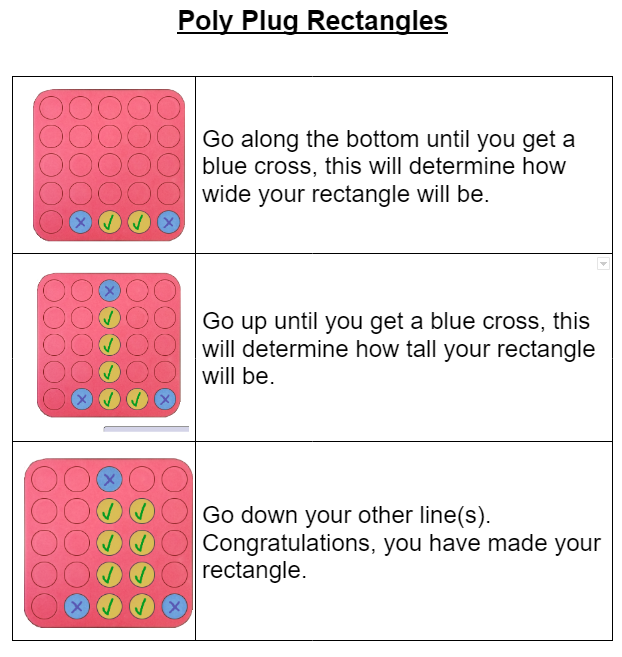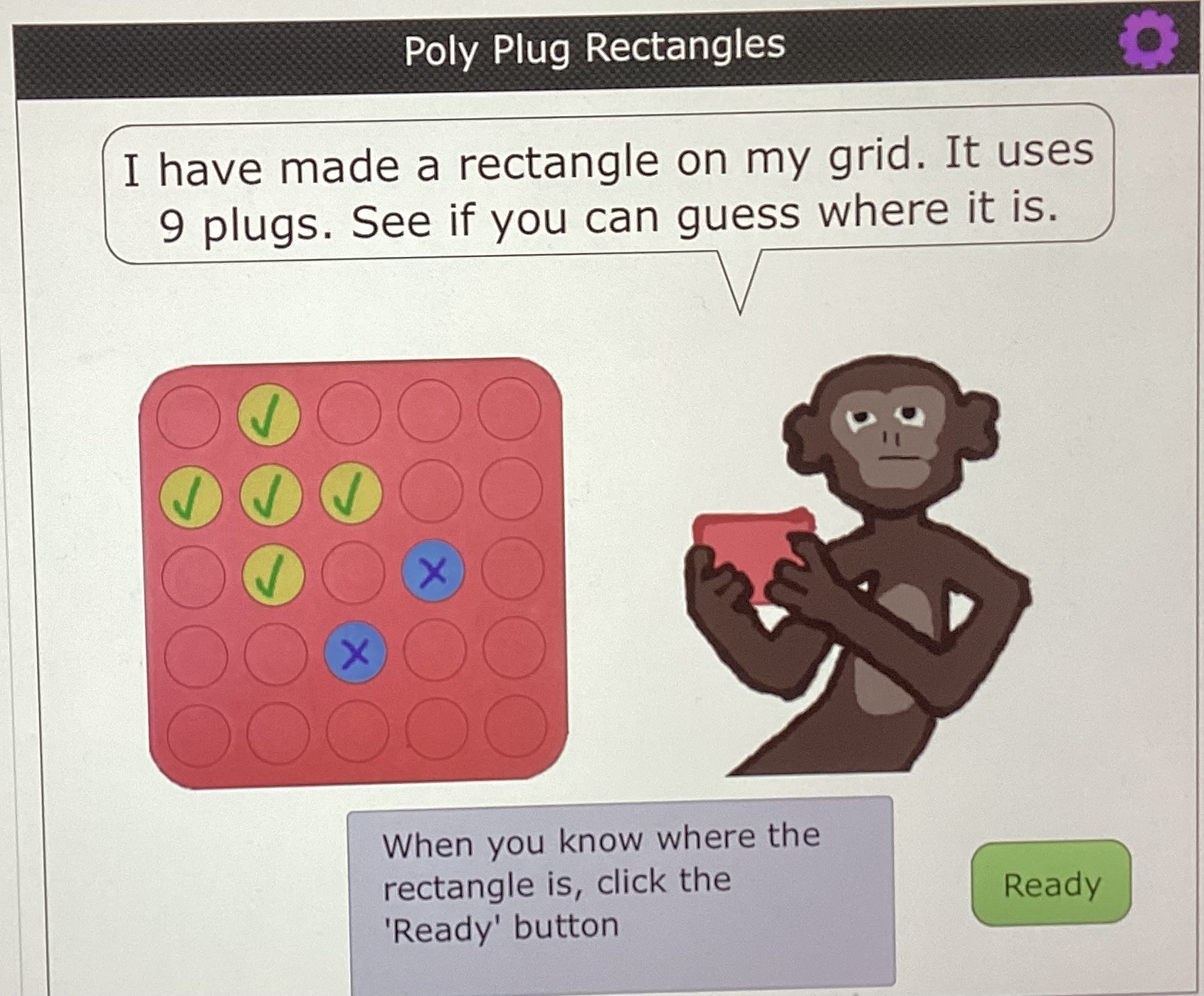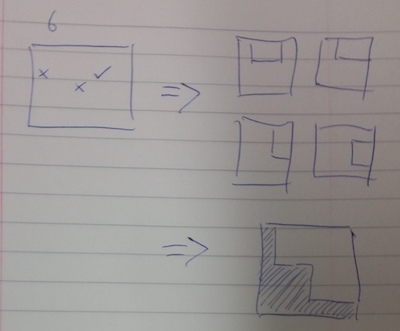Or search by topic
Number and algebra
Geometry and measure
Probability and statistics
Working mathematically
Advanced mathematics
For younger learners
Poly Plug Rectangles



- Problem
- Getting Started
- Student Solutions
- Teachers' Resources
Thank you to everybody who sent us their ideas about how to find the monkey's rectangle. You can see some videos of children working on this task in our Early Years Children's Thinking section.
Sion from Twyford School in England sent in this strategy:

Well done, Sion - I agree that this strategy will always work!
I wonder if there's a way that Sion could change this strategy to use fewer test spots?
Louis from Prospect House School in England sent in this picture of the grid:

Thank you for sending in this picture, Louis. Can you see where the rectangle will be? The rectangle in this grid is actually a special type of rectangle - what other name do we have for rectangles like this one?
If we didn't have the monkey's clue about how many plugs are used in the rectangle, could we still work out exactly where the rectangle will be using Louis's test spots? Why or why not?
We thought you might also like to see these sketches, drawn by a member of the NRICH team as he was working on a new interactivity for this task:

What might he be thinking?
If you would like to get in touch with us about how you approached this task, please email us with your ideas.
Related Collections
You may also like
Consecutive Numbers
An investigation involving adding and subtracting sets of consecutive numbers. Lots to find out, lots to explore.
Roll These Dice
Roll two red dice and a green dice. Add the two numbers on the red dice and take away the number on the green. What are all the different possible answers?

